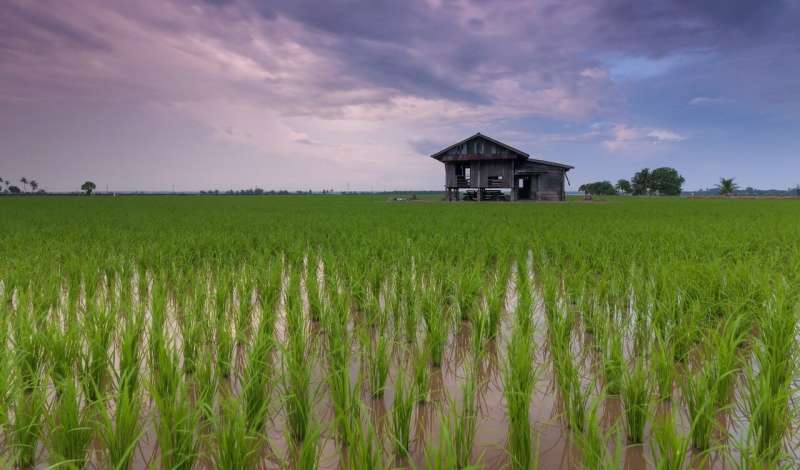Phosphorus placement and water-saving technologies can improve rice production in phosphorus-deficient lowlands

Strategic combinations of phosphorous and water management can contribute to the intensification of rice production in phosphorous deficient lowlands in sub-Saharan Africa (SSA).
Lowland rice production in sub-Saharan Africa (SSA) is often limited by water supply and low soil phosphorus (P) availability and efforts are needed towards more efficient management of both resources.
Additionally, crop roots are highly important for both water and phosphorous acquisition from the soil, and hence root performance plays a critical role determining water and phosphorous use efficiency.
Field and pot experiments were set up to evaluate combinations of water saving technologies (such as alternate wetting and drying, and aerobic rice) and phosphorous placement methods (i.e. the localized application of a small phosphorous fertilizer dose to a sub-surface area, often combined with seeds into the planting hole) with due attention to treatment effects on root architecture.
Phosphorous applied to soil as fertilizer moves away from the point of application mainly through diffusion, while sorption and precipitation reactions may reduce its mobility and availability to plants. Therefore, phosphorous diffusion and sorption outwards contrasting application rates of phosphorous placements was modeled under different water regimes to assess the combined effects on phosphorous availability to the rice crop.
It was shown that reduced water supply (i.e. at field capacity compared to soil saturation) restricted phosphorous diffusion, hence reduced phosphorous immobilization, and so increased total phosphorous availability from placements. These differences between water treatments were more pronounced at lower than at higher phosphorous supply and were confirmed on the field.
This study, which was carried out by scientists from Catholic University of Leuven, International Potato Center (CIP) and Africa Rice Center (AfricaRice), shows that both root responses and phosphorous diffusion outwards placed granules explain rice development and yields under phosphorous placement and water saving technologies. Obviously, broadcasting a large phosphorous rate remains advisable under phosphorous deficiency, but resource limitations may hamper such amendments.
"We argue, therefore, that phosphorous placements can contribute to intensify lowland rice production while countering soil phosphorous declines in phosphorous deficient lowlands," explained Dr. Pieterjan De Bauw, Division of Soil and Water Management, Catholic University of Leuven, who led the study.
"Without phosphorous application or when applying small phosphorous placement rates, interactions with water management should definitely be considered, as water saving technologies were observed to enhance phosphorous uptake, enhance rice development, and increase yields in such situations," he added.
The findings of the study were revealed in the article "Combining phosphorus placement and water saving technologies enhances rice production in phosphorus-deficient lowlands."
More information: P. De Bauw et al. Combining phosphorus placement and water saving technologies enhances rice production in phosphorus-deficient lowlands, Field Crops Research (2019).
Provided by Africa Rice Center (AfricaRice)



















